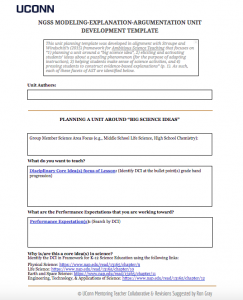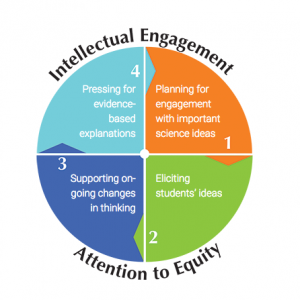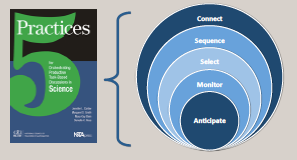Units
The units were developed by pre- and in-service teachers using a planning template developed in alignment with Stroupe and Windschitl’s (2015) framework for Ambitious Science Teaching that focuses on “1) planning a unit around a “big science idea”, 2) eliciting and activating students’ ideas about a puzzling phenomenon (for the purpose of adapting instruction), 3) helping students make sense of science activities, and 4) pressing students to construct evidence-based explanations” (p. 1). The following is a link to the most recent iteration of the planning template that can be used or adapted for developing additional units beyond those at this site:

Modeling Explanation Argumentation Unit Plan Template 2.0

Tasks
The tasks were developed by pre- and in-service teachers using planning templates developed in alignment with Cartier, Smith, Stein, & Ross’ (2013) 5 Practices for Orchestrating Productive Science Discussions that focuses on selecting goals and a task; anticipating and monitoring student work; and making decisions about discussion through selecting, sequencing, and connecting student work. This first template focuses on selecting goals and selecting a task using Next Generation Science Standards performance expectations. For each task, the following four templates are available: (Note: As with the unit planning template, the following are the links to the most recent iterations of the planning templates that can be used or adapted for developing additional tasks beyond those at this site):
Selecting Goals and Selecting Tasks
Selecting, Sequencing, and Connecting [Note: this is a guide for supporting moment-to-moment decision making during instruction]
Implementation Guide [Note: this guide can be used during instruction, since it aggregates those plans from across the other templates]
Assessments
This NGSS Assessment Development Template was developed in alignment with Creative Commons by the Research + Practice Collaboratory, 2016. (Some content on this website may require the use of a plug-in, such as Adobe Acrobat Viewer.) These five steps were designed to help teams develop assessment tasks.
- Step 1: Define what you will assess by analyzing relevant sections of A Framework for K-12 Science Education and crafting learning claims.
- Step 2: Brainstorm Possible Scenarios for Eliciting Student Understanding.
- Step 3: Use Task Formats to Build Questions to Engage Students with the Scenario.
- Step 4: Imagine the Range of Possible Student Responses to the Questions.
- Step 5: Share, Review, and Revise.
The following is a link to the most recent iteration of the planning template that can be used or adapted for developing additional units beyond those at this site:
